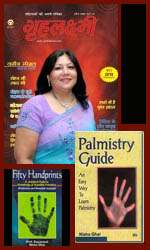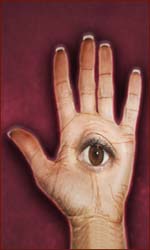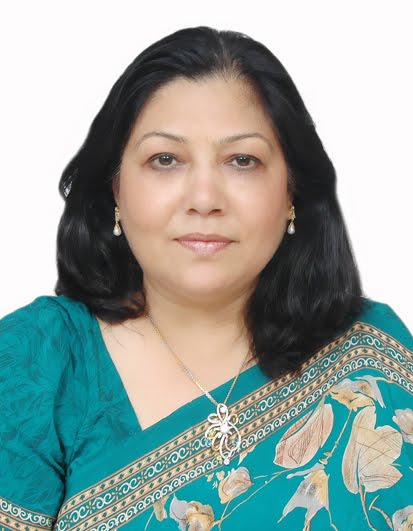
Palmistry, a science in process!

JUNE 5, 2009
Palmistry - a science in process!
Just as new experiments are being conducted every day in various sciences with old laws getting discarded and the new one discovered, palmistry is also undergoing the same process.
Author: Indian palmist Nisha Ghai


HOW SCIENTIFIC IS PALMISTRY?
The hand is a mirror of our personality. Its size, shape, texture, skin pattern, finger prints, length of fingers and Mounts of our hand reveal our basic tendencies and make us aware of our own personality, potentials and talents. All these features along with lines make our future. After knowing and understanding these features we can know hidden capacity of the person.
Lines of our hand are not the creases on hand but they represent the activity of our unconscious mind.
Hindus call it MANN.
More lines in our hand means more active mind. According to the research of Prof. Dayanand (Head of the Institute of Palmistry) the Mounts on our hand work as magnetic centers, which attract electric currents of brain and lines on the palm show the path of these currents. Reading the lines is equal to reading the hidden capacity of a person.
According to Prof. Dayanand 25% of somatosensory area of the brain is related to both the hands, which indicates the close relation between brain and hand.
Palmistry is study of unconscious mind. The desires, which lie dormant. Our unconsciousness builds the blocks of future. These longings show themselves as lines of palm. When we read lines of palm we, in fact, read the unconscious mind because only this reading of unconscious leads one's capability to read the future.
LINES ARE SUBJECT TO CHANGE
From my experience, I have noticed that the lines of palm are subject to change. Our will power, optimistic /pessimistic thinking and positive or negative behavior may be the course of this change.
The job of a good palmist is not to just predict future of a person, but is also to encourage him/her to fight against obstacles and to help one in building confidence for changing his lines in the desired way.
HOW LINES ARE FORMED
The palm is a mirror of our Brain and mind. The raised portion of flesh on palm are known as Mounts. The Lines of the palm are waves, which indicate activeness of our unconscious mind. The Lines on the palm are the waves which indicate what goes in our unconscious mind.
Dr Eugene Scheimann has referred to many experiment of his times to prove that the three main lines and the pattern on the skin of the palm are formed during the third and the fourth month of pregnancy. The mind starts functioning only when one is born. How do then these lines are formed in one's mother womb?
One answer is rebirth! And who doesn't believe in rebirth state that genes of one's parent are responsible for his physical and mental makeup.
WHICH HAND IS TO BE EXAMINED: RIGHT OR LEFT?
This is a very common question : Which hand of a client should be studied - right or left?
According to the ancient Indian Palmistry (HAST SAMUDRlKA) a woman's left hand and a man's right hand should be preferred for study.
According to Western Palmistry both the hands of the person should be studied, left hand up to adolescent age and after that priority should be given to right hand or active hand that is the hand with which we write.
Our conclusion on this point is that the importance should be given to both the hands since the non-active hand reflects our unconscious mind, which we have brought with us in the forms of genes and the active hand reflects our conscious mind which we have changed through our efforts.
The signs of both the hands should be considered. The signs, which are similar in both the hands, can lead to certain definite conclusion. But where the signs are not similar the deciding factor should be signs of active hand.
Moreover, there is no need to distinguish between men and women and young or matured person in this regard.
Palmistry books by Nisha Ghai:
Palmistry Guide: an easy way to learn palmistry
Fifty Handprints: a practical guide to knowledge of scientific palmistry
More palmistry books
Source: Sify
Palmist Nisha Ghai, Palmist prof. Daya Nand

Nisha Ghai
Nisha Ghai is the director of the Institute of Palmistry in New Delhi, India. She and professor Daya Nand (founder of the Institute of Palmistry) are doing reserach in the field of scientific aspects of palmistry since 10 years.
Nisha Ghai has been practicing Hindu palmistry since 1990. She specializes on individual issues based on their natal astrological charts and hand reading.
Related sources:
Hindu palm readers push along spiritual path
Learn more about Hindu Palmistry
24 Percent of Indians consult a palmist
Cheiro & the line of life
Gift markings in the palm of your hand!
PsychoDiagnostic Chirology
Palmistry: a science in process